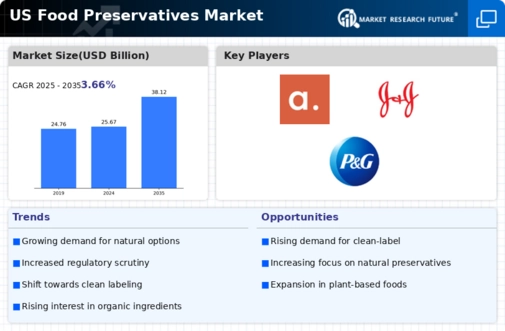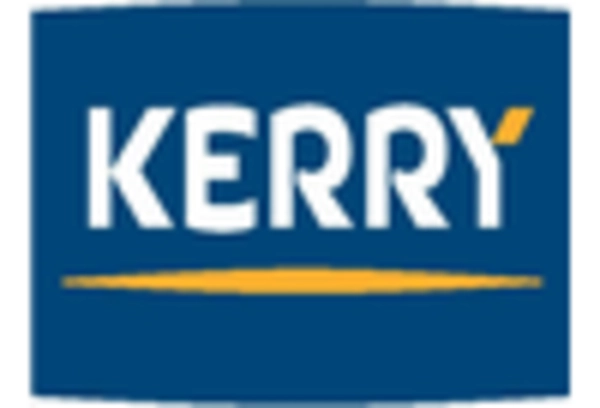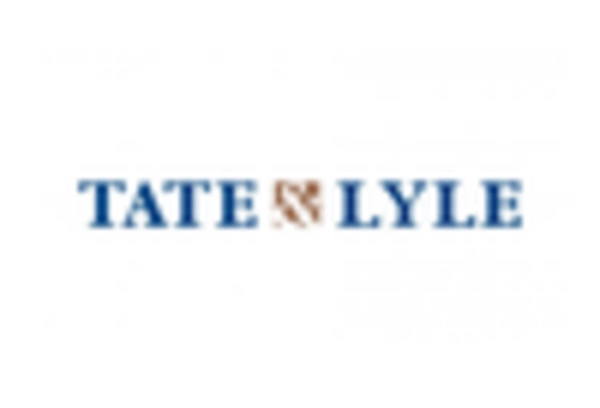Increased Focus on Food Safety Regulations
the food preservatives market is shaped by an increased focus on food safety regulations. Regulatory bodies are implementing stricter guidelines regarding the use of preservatives, necessitating compliance from manufacturers. This heightened scrutiny aims to ensure consumer safety and product integrity, which in turn drives innovation within the industry. Companies are investing in research and development to create preservatives that meet regulatory standards while also appealing to consumer preferences. The market is projected to grow by approximately 3.5% annually as businesses adapt to these evolving regulations. This focus on safety not only impacts product formulations but also shapes consumer trust in the food preservatives market.
Health Consciousness and Clean Label Trends
the food preservatives market is impacted by the rising health consciousness among consumers. There is a growing trend towards clean label products, which emphasize transparency in ingredient sourcing and formulation. Consumers are increasingly scrutinizing food labels, seeking products that contain fewer artificial additives and preservatives. This shift has prompted manufacturers to reformulate their products, opting for natural preservatives that align with consumer preferences. As a result, the market for natural preservatives is expected to grow, potentially reaching a valuation of $1.5 billion by 2027. This trend reflects a broader movement towards healthier eating habits, which is likely to shape the future landscape of the food preservatives market.
Rising Consumer Demand for Shelf-Stable Products
the food preservatives market is seeing an increase in consumer demand for shelf-stable products. This trend is driven by the growing preference for convenience foods, which require longer shelf lives to meet consumer needs. According to industry reports, the demand for ready-to-eat meals and packaged snacks has surged, leading to a projected growth rate of approximately 5.5% in the food preservatives market over the next five years. Consumers are increasingly seeking products that can maintain quality and safety over extended periods, thereby driving manufacturers to innovate and enhance their preservation techniques. This shift towards convenience is likely to continue influencing the food preservatives market, as busy lifestyles necessitate products that offer both longevity and quality.
Technological Advancements in Preservation Methods
Technological advancements are playing a crucial role in shaping the food preservatives market. Innovations in preservation methods, such as high-pressure processing and modified atmosphere packaging, are enhancing the efficacy of preservatives while maintaining food quality. These technologies allow for the extension of shelf life without compromising nutritional value or taste. The integration of smart packaging solutions is also emerging, providing real-time monitoring of food freshness. As these technologies become more accessible, they are expected to drive growth in the food preservatives market, with an estimated increase of 4% in market size over the next few years. This evolution in preservation techniques indicates a promising future for the industry.
Expansion of E-commerce and Online Grocery Shopping
the food preservatives market benefits from the expansion of e-commerce and online grocery shopping. As consumers increasingly turn to online platforms for their grocery needs, the demand for preserved foods is likely to rise. E-commerce provides convenience and accessibility, allowing consumers to purchase a variety of shelf-stable products with ease. This trend is expected to contribute to a growth rate of around 6% in the food preservatives market over the next few years. Retailers are adapting their strategies to cater to this shift, enhancing their online offerings of preserved foods. The growth of e-commerce is reshaping the distribution landscape, thereby influencing the dynamics of the food preservatives market.

















Leave a Comment